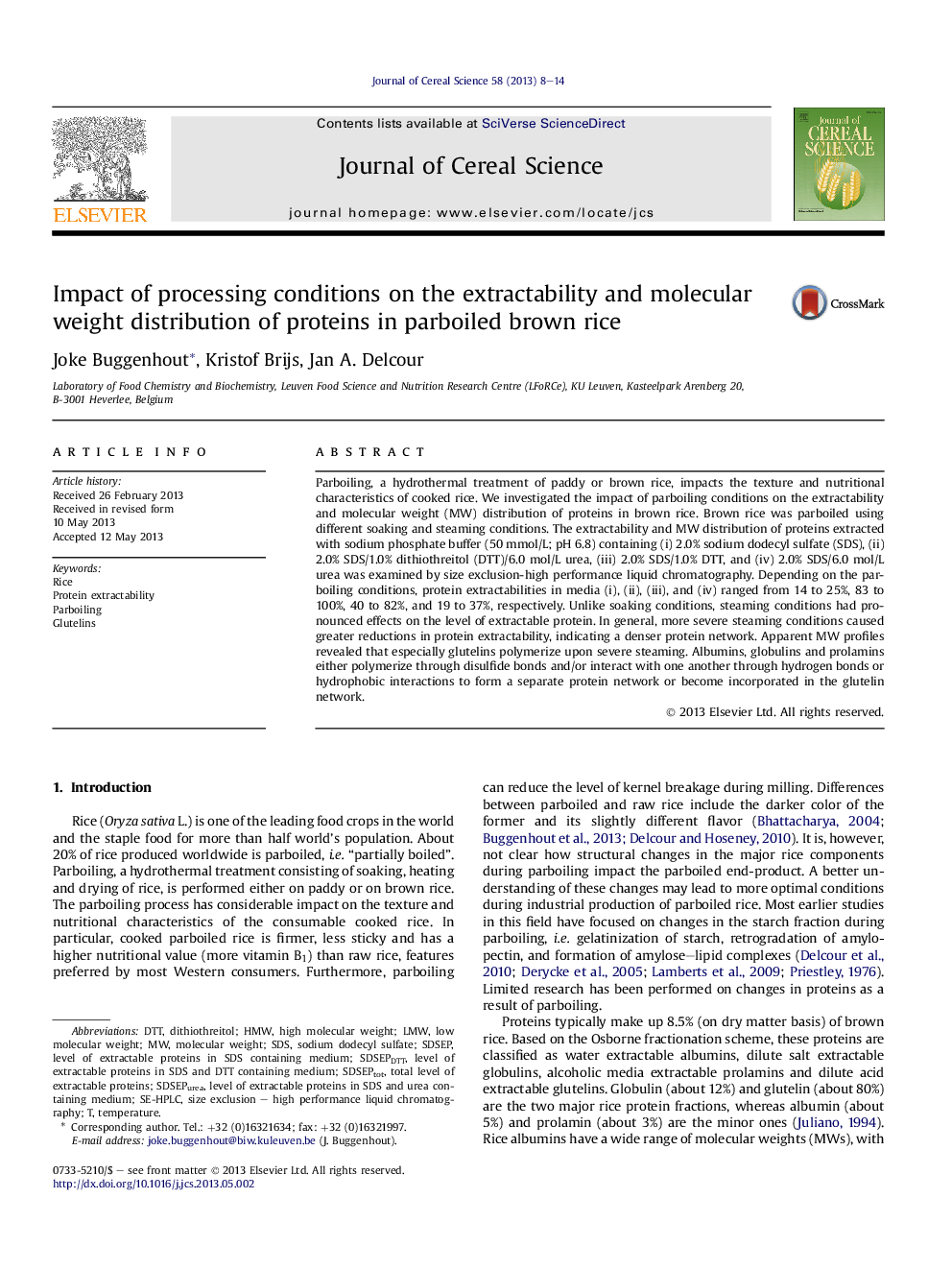| کد مقاله | کد نشریه | سال انتشار | مقاله انگلیسی | نسخه تمام متن |
|---|---|---|---|---|
| 4515872 | 1322330 | 2013 | 7 صفحه PDF | دانلود رایگان |

• Rice proteins polymerize during parboiling by disulfide bonds, and interact with one another through hydrogen bonds and/or hydrophobic interactions.
• Rice glutelins are the main building blocks of the protein network.
• More severe steaming conditions result in more glutelin polymerization and a denser protein network.
Parboiling, a hydrothermal treatment of paddy or brown rice, impacts the texture and nutritional characteristics of cooked rice. We investigated the impact of parboiling conditions on the extractability and molecular weight (MW) distribution of proteins in brown rice. Brown rice was parboiled using different soaking and steaming conditions. The extractability and MW distribution of proteins extracted with sodium phosphate buffer (50 mmol/L; pH 6.8) containing (i) 2.0% sodium dodecyl sulfate (SDS), (ii) 2.0% SDS/1.0% dithiothreitol (DTT)/6.0 mol/L urea, (iii) 2.0% SDS/1.0% DTT, and (iv) 2.0% SDS/6.0 mol/L urea was examined by size exclusion-high performance liquid chromatography. Depending on the parboiling conditions, protein extractabilities in media (i), (ii), (iii), and (iv) ranged from 14 to 25%, 83 to 100%, 40 to 82%, and 19 to 37%, respectively. Unlike soaking conditions, steaming conditions had pronounced effects on the level of extractable protein. In general, more severe steaming conditions caused greater reductions in protein extractability, indicating a denser protein network. Apparent MW profiles revealed that especially glutelins polymerize upon severe steaming. Albumins, globulins and prolamins either polymerize through disulfide bonds and/or interact with one another through hydrogen bonds or hydrophobic interactions to form a separate protein network or become incorporated in the glutelin network.
Journal: Journal of Cereal Science - Volume 58, Issue 1, July 2013, Pages 8–14